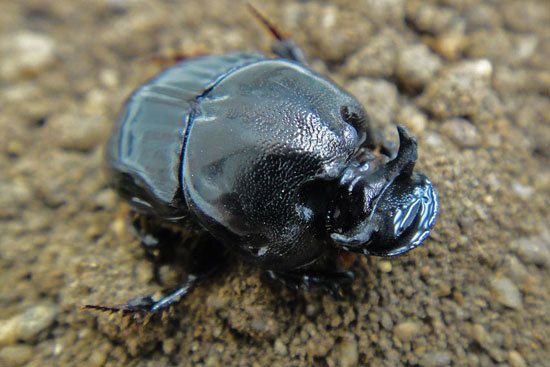Australia has Too Much Cow Poop, Imports Dung Beetles to Curb Crap Levels
The most interesting animals in Australia are the ones that have evolved to fill the very specific niches available on the once-isolated continent. The introduction of new species during European colonization brought animals that weren’t so well adjusted, and have strained the local environment to keep up. Domestic cattle, for instance, have been fouling fields because the local dung beetle population simply can’t cope with that much cow crap. This has forced scientists to look elsewhere for a solution.
At the heart of the problem is cow turds themselves. The local animals of Australia generally produce dry, highly fibrous manure and the local dung beetles have evolved in kind. Cow pads (as they’re politely called), on the other hand, are wet and sloppy. Cows relieve themselves in such great abundance that the local dung beetles cannot keep up, and there are simply not enough beetles active throughout the year. This not only means gross, treacherous fields but an enormous surge in populations of biting flies that eat and lay eggs in cow dung.
Since the late 1960s, the Australian governmental science organization Commonwealth Scientific and Industrial Research Organisation (CSIRO) has tried to solve the cow poop problem by importing dung beetles from other countries. The importation has seen some success over the years, and even spawned the best named bureaucratic comittee in the history of agrarian science: The “National Dung Beetle Steering Committee.”
Now, scientists think they have a winning combination in two specimens Bubas bubalus and Onthophagus vacca. Collected in Southern France this spring, CSIRO thinks that these beetles will do the trick. These beetles are not only used to gorging themselves on cow dung, but are also expected to contribute other benefits to the region. Less cow dung will mean less runoff into streams, and also fewer flies — which can sometimes lay 3,000 eggs in just a few days. The beetles also dig underground burrows that help airate the soil, and beetle activity helps return some of the nutrients locked in the dung back into the ecosystem.
In a statement to PhysOrg, CSIRO lead researcher Dr. Jane Wright expressed great confidence on curbing the crap in Australia:
“These beetles have been carefully selected for their suitability to the climate and seasons of southern Australia. We hope the new species will be the perfect allies for existing beetles that are doing a good job but are not active during the early spring months across southern Australia[.]”
Of the two species, Bubas bubalas seems like a real winner. Not only does it seem likely to gravitate toward the bovine leavings, it also has remarkable population densities — laying 60 eggs in a single beetle’s lifetime and building colonies of 20 beetles per dung heap. That’s a lot of beetles, and that’s exactly what Australian officials are shooting for.
The first batch of collected eggs has already hatched in the forbodingly-named “Black Mountain Quarantine facility.” However, these specific beetles will likely never be released. Scientists are aiming to build up two generations in the lab — looking to remove any signs of dangerous foreign illness. Once the little beetles go through a few more mating cycles and some test runs, they’ll be ready for large scale release in 2014.
Good luck to these little guys. There’s a whole world of crap waiting out there for them.
- Artificial meat made from human poop
- A car that runs on poop
- Australia also considered killing camels to prevent their farts to reduce global warming
Have a tip we should know? tips@themarysue.com
